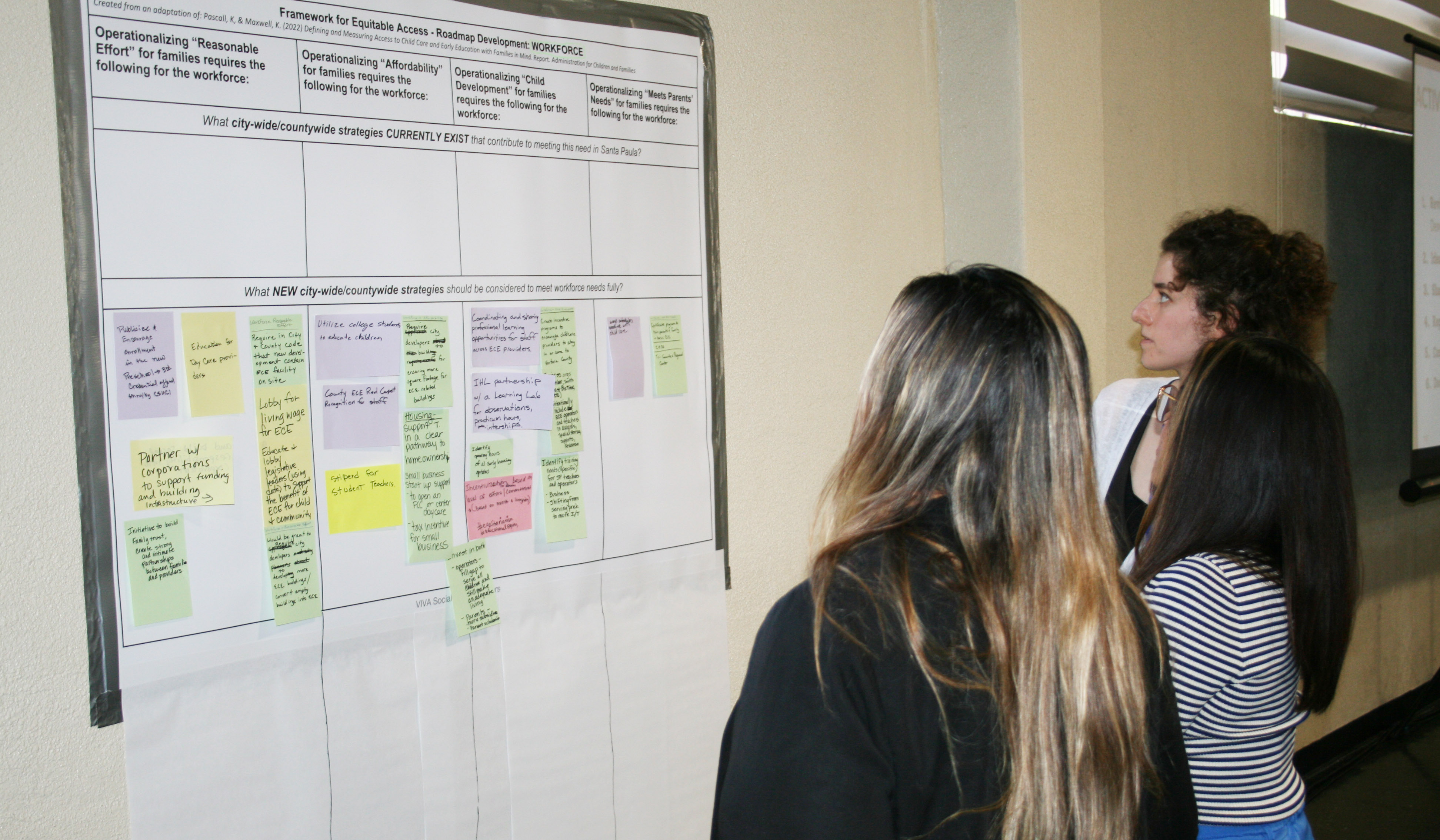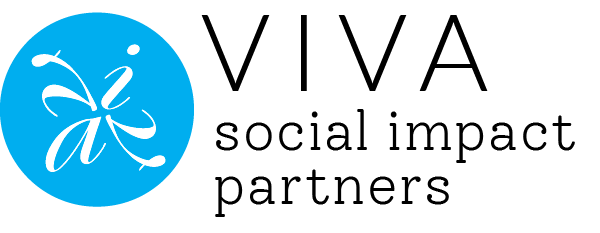4 min read
Methodologies in Community Engagement for the Isabella Project
Iris Elent
November 20, 2024
Blog

This blog is part of a series on a community-driven approach to develop an early learning roadmap and strengthen a local early learning system. Need to catch up? Start here.
The Isabella Project in Santa Paula, California, is a community-driven initiative focused on creating a responsive and equitable early childhood education system. To build a comprehensive Roadmap for Equitable Access to Early Care and Education, the project team prioritized engaging directly with local families, child care providers, and community members. This approach allowed them to understand the specific needs and values of this agriculturally rooted community, where over 80% of the population identifies as Latino, and many young children qualify for subsidized child care.
By using a mix of surveys, focus groups, and unique 20-minute mini-interviews in natural community settings, the VIVA team collected insights for the Isabella Project that would have been challenging to capture with population-based data alone. This blog explores the methodologies used, their purpose, and how they contributed to a holistic understanding of early childhood education needs in Santa Paula.
The Importance of Diverse Methodologies in Community Engagement
A successful community engagement strategy requires approaches that are not only varied but also adapted to the unique characteristics of the community. For the Isabella Project, this meant gathering insights from both quantitative and qualitative sources to ensure a well-rounded perspective. The team integrated population-based data from sources like the Census and the American Community Survey (ACS) with in-depth community feedback to capture both the demographics and the lived experiences of Santa Paula families.
To balance data and community voices, the team used three main methods: focus groups, surveys, and mini-interviews. Each played a distinct role in shaping a responsive and culturally attuned roadmap.
Methodology 1: Focus Groups
Focus groups were a cornerstone of the community engagement process. These sessions were conducted separately for English and Spanish participants and included focus groups for families and for early childhood educators to discuss their experiences, preferences, and needs regarding early childhood education. The focus groups offered a space for open dialogue and allowed the team to explore complex topics in a more nuanced way.
Why Focus Groups?
Focus groups provide a setting where participants can interact with each other, often surfacing new ideas and perspectives through collective discussion. This method was particularly valuable for the Isabella Project because it allowed the team to observe how cultural values, community bonds, and shared experiences influenced family choices about child care. According to Mwita (2022), using multiple qualitative methods in tandem, such as focus groups alongside surveys, can help offset some limitations inherent in each individual approach. For instance, focus groups can reveal collective community insights that may not emerge in individual interviews, but they are also prone to groupthink and social biases (Mwita, 2022).
To address these potential biases, VIVA also included surveys and mini-interviews in the Isabella Project engagement process, creating a triangulation of methods that enhanced the robustness and credibility of the data collected.
Methodology 2: Surveys
Surveys were another essential component of the Isabella Project’s approach. Distributed widely among families and the early childhood education (ECE) workforce, these surveys collected both quantitative and qualitative data, allowing for broader insights into the community’s needs.
Purpose of the Surveys
Surveys allowed the team to reach a larger segment of the Santa Paula population, gathering data on specific topics such as access to child care, cultural and linguistic preferences, and perceptions of program quality. Conducted in both English and Spanish, the surveys included both closed-ended and open-ended questions. This combination made it possible to quantify certain patterns (e.g., how many families prioritized cultural alignment) while also capturing personal stories and unique insights through open-ended responses.
Surveys complemented the qualitative data from focus groups by providing statistical information that could be cross-referenced with larger population data sources like the ACS. It also added new information, which is not available from ACS. Almeida et al. (2021) emphasize that combining both qualitative and quantitative approaches allows for a more flexible and adaptable methodology that can address a variety of research needs, enhancing the reliability of the findings.
Methodology 3: Mini-Interviews in Natural Settings
To counter some of the biases that may occur in focus groups, VIVA conducted a series of brief, informal interviews with families and child care providers in natural community settings, such as libraries, parks, and other places where people naturally gather. These 20-minute interviews were not scheduled in advance but were held spontaneously as opportunities arose. This flexibility enabled the team to reach individuals who might not have attended a formal focus group or completed a survey.
Purpose of Mini-Interviews
The main purpose of these mini-interviews was to engage with community members in a setting where they felt comfortable and relaxed, encouraging more authentic responses. By speaking to parents and caregivers in their everyday environments, the team could capture insights that were less influenced by the group dynamics of focus groups or the structure of surveys. This method also offered a quick and effective way to reach people who might be short on time or hesitant to participate in more formal research settings.
Advantages of Natural Settings
Natural settings helped reduce response biases by creating a more casual, conversational atmosphere. Families were more likely to share candid thoughts about their child care needs, concerns about local programs, and the role of cultural alignment in their decision-making. These mini-interviews allowed the team to observe and understand the practical realities faced by families and caregivers in their daily lives, which provided context to the more structured findings from surveys and focus groups. This aligns with Almeida et al.’s (2021) observation that qualitative approaches are adaptable and particularly effective for capturing nuanced, real-world insights that may not emerge in more controlled research settings.
A Well-Rounded Approach
The combination of these methodologies—focus groups, surveys, and mini-interviews—offered the Isabella Project a comprehensive view of the Santa Paula community’s early childhood education needs. Here’s how they worked together:
- Focus groups provided detailed, collaborative discussions that revealed values, priorities and challenges.
- Surveys broadened the reach of the project, validating trends and gathering statistical data to support qualitative insights.
- Mini-interviews offered a more spontaneous, natural perspective, reducing biases and capturing participants priorities, experiences, and challenges.
Together, these methods ensured that the Roadmap for Equitable Access to Early Care and Education reflected both the community’s demographic data and the lived experiences of families and providers. By blending quantitative data from the American Community Survey with the qualitative richness of community engagement, the Isabella Project created a roadmap that is not only informed by statistical trends but also deeply connected to the voices and values of Santa Paula.
Conclusion: A Roadmap Built on Community Voices
The Isabella Project’s multi-method approach is a testament to the power of community engagement in shaping responsive, inclusive policies. By combining population data with diverse engagement methods, the project team could see the “big picture” while also diving into the nuances that make Santa Paula unique. This methodology allows for a more comprehensive understanding of the factors that influence family choices in early care and education, helping ensure that every child in Santa Paula has access to the high-quality care they deserve.
References:
- Almeida, F., et al. (2021). Strengths and Limitations of Qualitative and Quantitative Research Methods. International Journal of Research in Business and Social Science.
- Mwita, K. (2022). Strengths and Weaknesses of Qualitative Research in Social Science Studies. International Journal of Research in Business and Social Science, 11(6), 618-625. DOI:10.20525/ijrbs.v11i6.1920.
